Want to know How To Make Grape Must easily at home? This delicious sweet liquid can produce some really unique-flavored dishes or can be reduced down to a thick syrup called Grape molasses.
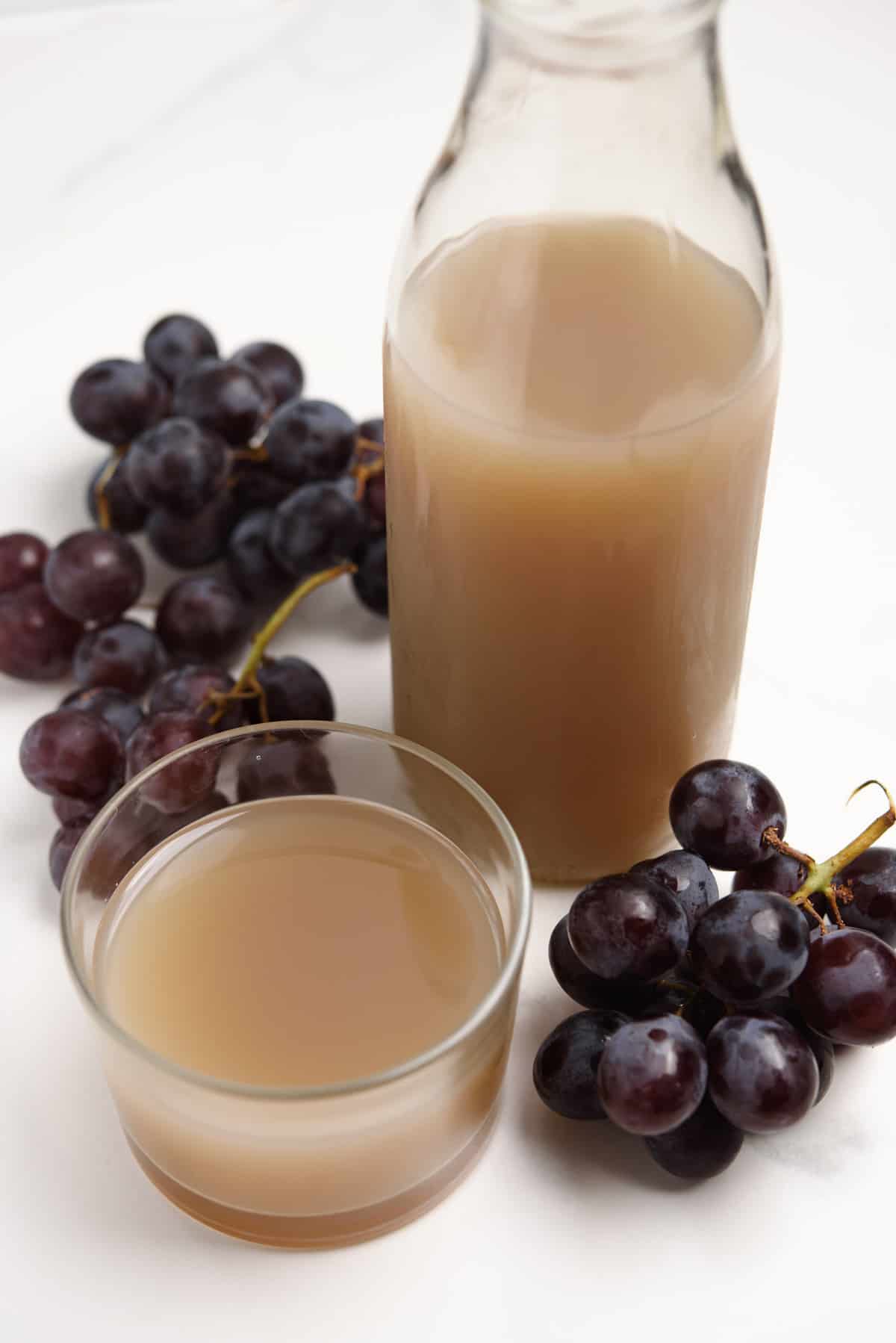
Table Of Contents
What Is Grape Must?
Grape must is grape juice from crushed grapes clear from the fruits' skins and seeds.
Grape must is used to make wine, grape molasses, and various desserts such as grape pudding, Moustokouloura (grape must cookies), etc.
How Is It Made?
Grape must is obtained by crushing grapes in a way that they get separated by their skins and seeds without blending them together (blenders and food processors are out of the question here).
The traditional way of crushing the grapes which dates back millennia, is by foot. Grapes were added in huge buckets where people stepped inside them and by walking or sometimes dancing they crushed the grapes.
Later on, modern machinery came into play that crushed the grapes while allowing the juice to run through sieves.
To Make At Home
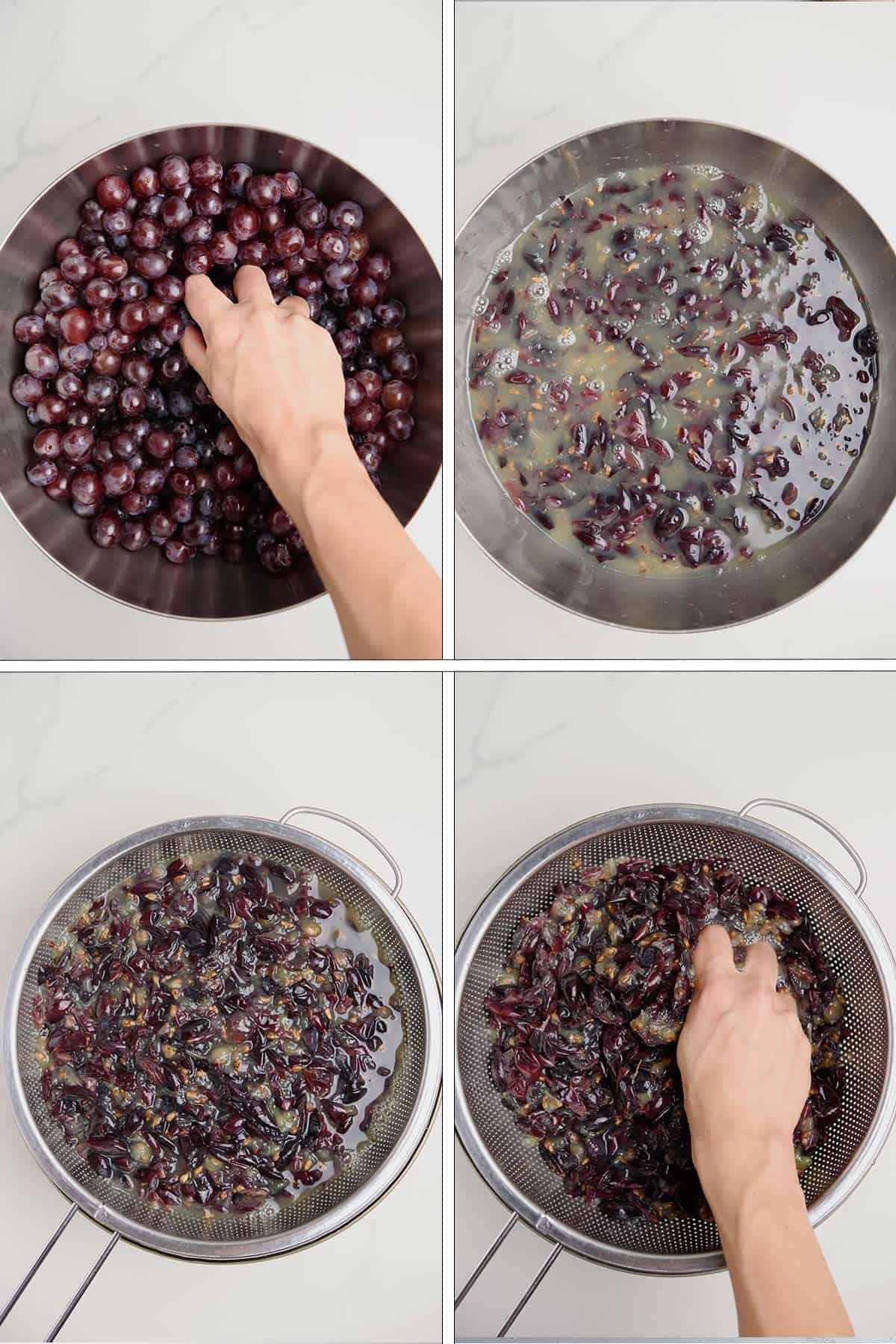
To make Grape Must at home you need a very big bowl or pot, a strainer, and weight if you don't want to use your hands to squeeze the grapes (I'm pretty sure you're not planning to use your feet). Plus a muslin cloth to strain the juice. And then simply follow the recipe below which is very easy.
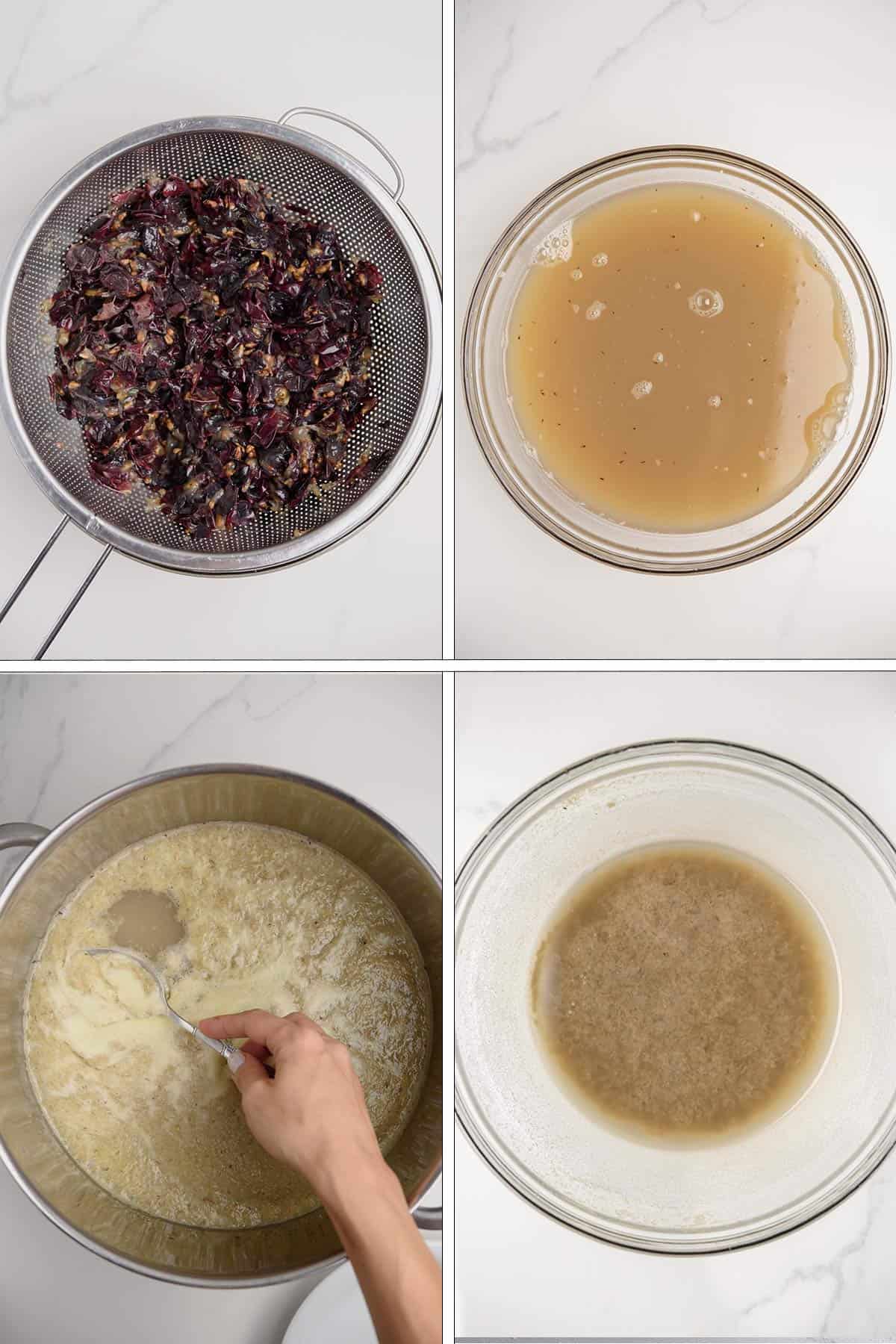
Quantity Obtained
The Grape Must you will get from grapes is half the amount of their original weight more or less. For example, for every kilogram (2.2 pounds) of grapes, you will get half a kilogram (1.1 pounds) of Grape Must.
For this recipe, we're using 5 kilograms of grapes (11 pounds) and we get about 2,5 (5.5 pounds) to 2,7 kilograms (5.9 pounds) of Must.
Making Wine
Grape must is the beginning stage of winemaking. Enzymes that live on the skins of the grapes, blend into the juice by crushing, and with the help of air and the bacteria found there, begin the fermentation process.
For red wine, the grape must is allowed to sit for a couple of days (7-14) together with the skins and seeds which are called pomace to give it a rich color. While for white wine the fermentation takes place without using the pomace (solid parts of the fruit).
At this point, yeast or extra sugar may be added if the must doesn't have a good percentage of sugars on its own. In order to help with the fermentation and turn the sugary juice into alcohol.
After this, it gets transferred into barrels and allowed to ripen.
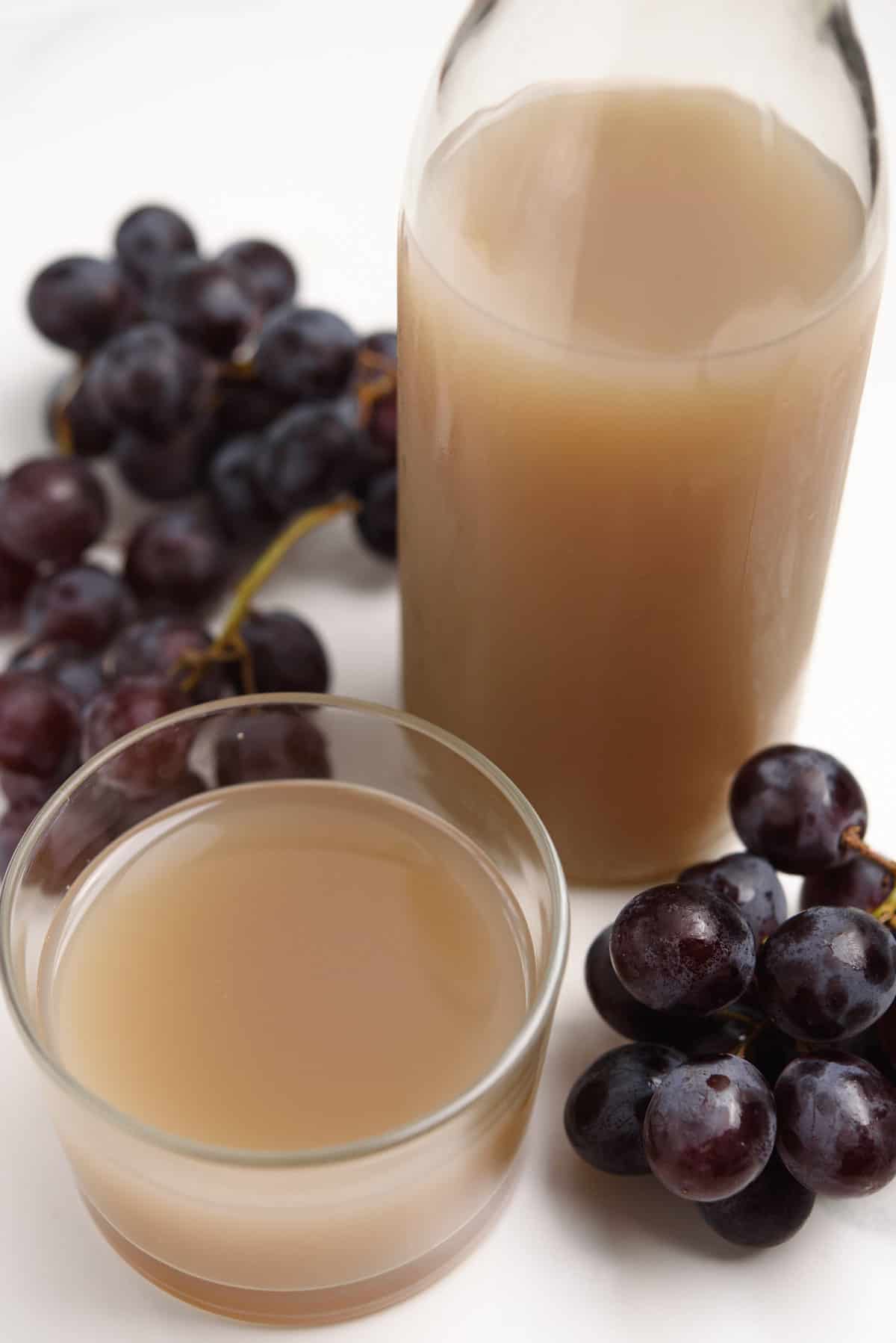
To Use In Cooking
To use Grape Must for cooking purposes you need to stop the fermentation that begins from the moment you crush the grapes so it won't turn into alcohol.
In order to do this you need to boil the must. And clean it from any remnant skins, seeds, or dirt.
The traditional way is to add clean wood ashes to the must while you boil it. This helps the Must separate from all foreign bodies.
The ashes need to be free from all chemicals (light the fire naturally for example), and only from burnt wood. Not burned wood that has been painted for instance.
Is it necessary to use ashes?
No, it is not. Though it yields a more refined and clear liquid it is not necessary. Just by boiling the Must, the fermentation stops.
Making Petimezi (Grape Molasses)

To make Petimezi in other words Grape Molasses, you need to cook the Grape Must until it gets reduced into syrup. That means it needs to cook until it's about ¼ to ⅕ of its original volume. Depending on how thick you like it to be. You can see how to make Grape Molasses here.
Popular Greek Dishes
Grape Must is used in making various traditional dishes like Grape pudding which is a sweet pudding made with flour and cornstarch. Another very popular one are Grape Must Cookies (Moustokouloura) which are either made with Grape Must or with Petimezi.
Also, Moustopita which is a Must pie again made with flour and walnuts or almonds and sometimes allowed to dry in the sun for a couple of days before it gets consumed.
Storing Grape Must
To store Grape Must you can add it to plastic or glass bottles and store it in the fridge for 3-4 days. Or freeze for up to 6 months.
Recipe
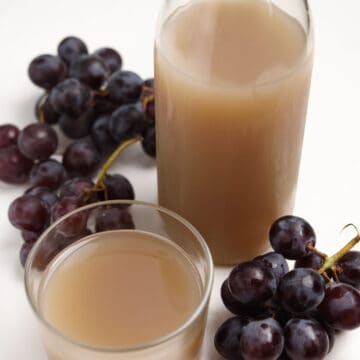
How To Make Grape Must
Ingredients
- 5 kilograms (11 pounds) grapes
- OPTIONAL: 2 tablespoons ashes (only from burnt wood)
Instructions
- Rinse grapes and place them on clean tea towels or paper towels and allow to dry.
- Separate grapes from the branches and place them in a very large mixing bowl or cooking pot. See note 1 below.
- Using either your hands or a weight press the grapes to remove their juice. If you have a juicer you can use that instead.
- Place a strainer over a bowl or cooking pot. Strain the grape juice to separate the skins from the juice.
- Press and squeeze the skins a little bit more inside the strainer to remove any remnant juice and then discard them.
Without Ashes:
- Add the grape juice (must) to a large cooking pot. Bring to a boil then turn heat to medium.
- Skim all the foam and dirt from the surface. Then turn the heat off and allow it to cool down to room temperature.
- Strain the grape must through a muslin cloth, passing it through 2 times.
- Store in bottles or jars for 2 days in the fridge or place in the freezer for up to 6 months.
Using Ashes:
- Add the grape juice (must) to a large cooking pot together with the ashes.
- Bring to a boil then drop heat to medium and skim the surface until clear from all the foam and dirt that arise.
- Turn the heat off. If using a stainless steel pot let the must cool inside the pot overnight. Otherwise, transfer the grape must to a large glass bowl to sit overnight.
- By the next day, all remnant dirt will have sunk at the bottom. Ladle the clear must from the top into clean jars or bottles, passing it first through a muslin cloth.
- Store in jars or bottles and keep in the fridge for up to 4 days or store in the freezer for up to 6 months.

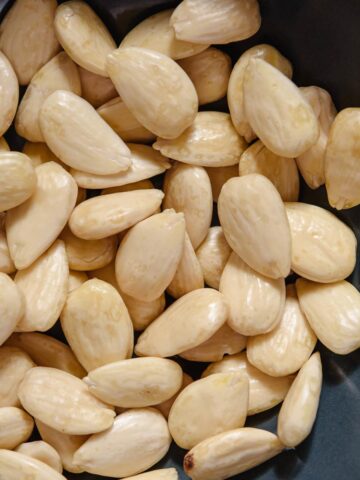
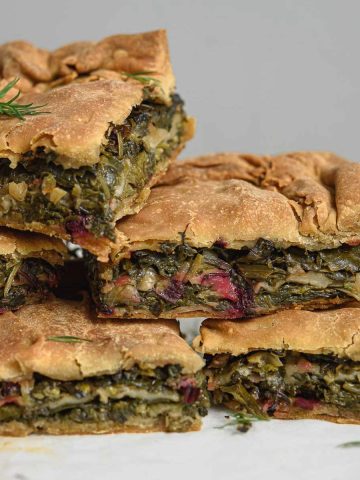
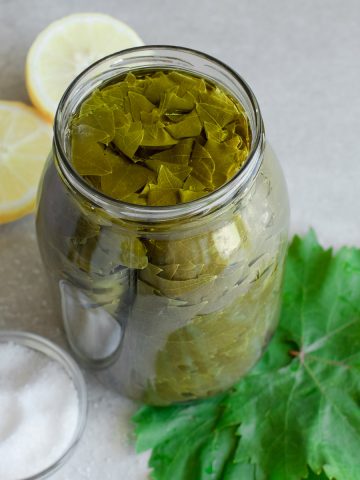
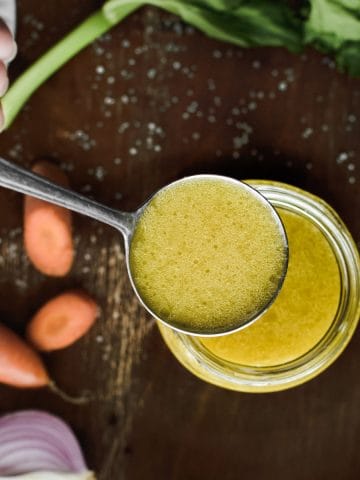
Leave a Reply